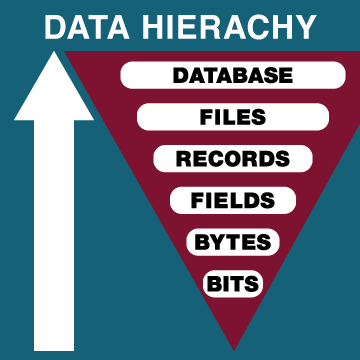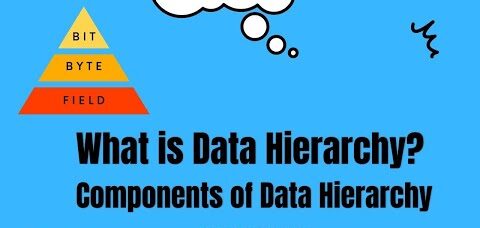In today’s data-driven world, understanding the hierarchy of data is crucial for managing, organizing, and making sense of the vast amounts of information generated every day. The levels of data hierarchy provide a structured framework that helps professionals across various industries handle data efficiently. Whether you’re a student, a business owner, or simply curious about the intricacies of data management, this article will guide you through the levels of data hierarchy, from the fundamental building blocks to more complex structures.
In the digital age, data is the currency that drives innovation, decision-making, and progress. From the smallest piece of information to the most complex datasets, data comes in various forms and serves different purposes. To effectively manage and leverage this data, professionals need to comprehend the levels of data hierarchy.
Defining Data Hierarchy
Data hierarchy refers to the systematic organization of data into various levels of complexity and abstraction. Each level represents a different perspective of data and plays a unique role in the information technology landscape. Understanding data hierarchy is like understanding the layers of a puzzle that come together to form a complete picture.
The Different Levels of Data Hierarchy

Bit and Byte
At the foundational level, we have bits and bytes. A bit, short for binary digit, is the smallest unit of data and can have a value of 0 or 1. Eight bits make up a byte, which can represent a single character.
Fields
Fields are where individual pieces of data are stored. They represent attributes of an entity, such as a person’s name or a product’s price.
Records
Records bring together related fields to represent a single entity or transaction. For instance, a record about a customer might include fields for the customer’s name, address, and purchase history.
Files
Files organize related records into a structured format. They could be spreadsheets, text files, or any other type of document that holds data.
Databases
Databases are collections of files that are organized and managed using a database management system (DBMS). They allow for efficient storage, retrieval, and manipulation of data.
Hierarchical Level
The hierarchical level arranges data in a tree-like structure, where each record has a parent and can have multiple children.
Network Level
Similar to the hierarchical level, the network level organizes data in a more flexible manner, allowing records to have multiple parent and child relationships.
Relational Level
The relational level, based on relational database management systems, establishes connections between different tables of data using keys, enabling complex queries and analyses.
Object-Oriented Level
The object-oriented level treats data as “objects” with attributes and methods, reflecting real-world entities and their interactions.
Multidimensional Level
This level is used for data warehousing and online analytical processing (OLAP), enabling complex analysis of large datasets from multiple dimensions.
Metadata Level
Metadata provides information about the data, such as its source, format, and structure, aiding in data discovery and management.
Knowledge Level
At the knowledge level, data is processed and organized into meaningful patterns, enabling insights and informed decision-making.
Wisdom Level
The highest level of data hierarchy involves applying knowledge to real-world situations, leading to innovation, predictions, and strategic planning.
Why Data Hierarchy Matters
Understanding data hierarchy is essential for efficient data management, accuracy, and the extraction of meaningful insights. By comprehending the different levels, professionals can avoid data redundancy, improve data integrity, and streamline processes.
Implementing Data Hierarchy in Real Life
In various industries, data hierarchy is applied to enhance operations. For example, in retail, understanding the hierarchy helps manage inventory, track sales, and personalize customer experiences.
Challenges in Managing Data Hierarchy
While data hierarchy offers numerous benefits, challenges like data security, integration, and maintaining consistency across levels must be addressed.
Future Trends in Data Management
As technology evolves, data management will become more automated and intelligent. Artificial intelligence and machine learning will play a significant role in optimizing data hierarchy and decision-making.
Conclusion
Data hierarchy is the backbone of effective data management. From the tiniest bit to the most complex insights, every piece of data finds its place within this hierarchy. By understanding these levels, you’re equipped to navigate the intricate world of data and harness its potential.
FAQs
1. What is the purpose of data hierarchy?
Data hierarchy serves to organize data into structured levels, aiding in efficient management and analysis.
2. How does data hierarchy impact decision-making?
Data hierarchy enables better decision-making by providing organized insights and patterns.
3. Is data hierarchy the same in all industries?
While the concept remains similar, different industries may emphasize certain levels based on their needs.
4. What challenges might businesses face in implementing data hierarchy?
Businesses could encounter challenges in data integration, maintaining consistency, and ensuring security.
5. How can I learn more about implementing data hierarchy in my field?
You can explore industry-specific resources or consult with data management professionals for tailored guidance.




Average Rating